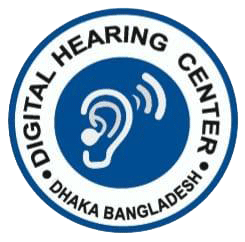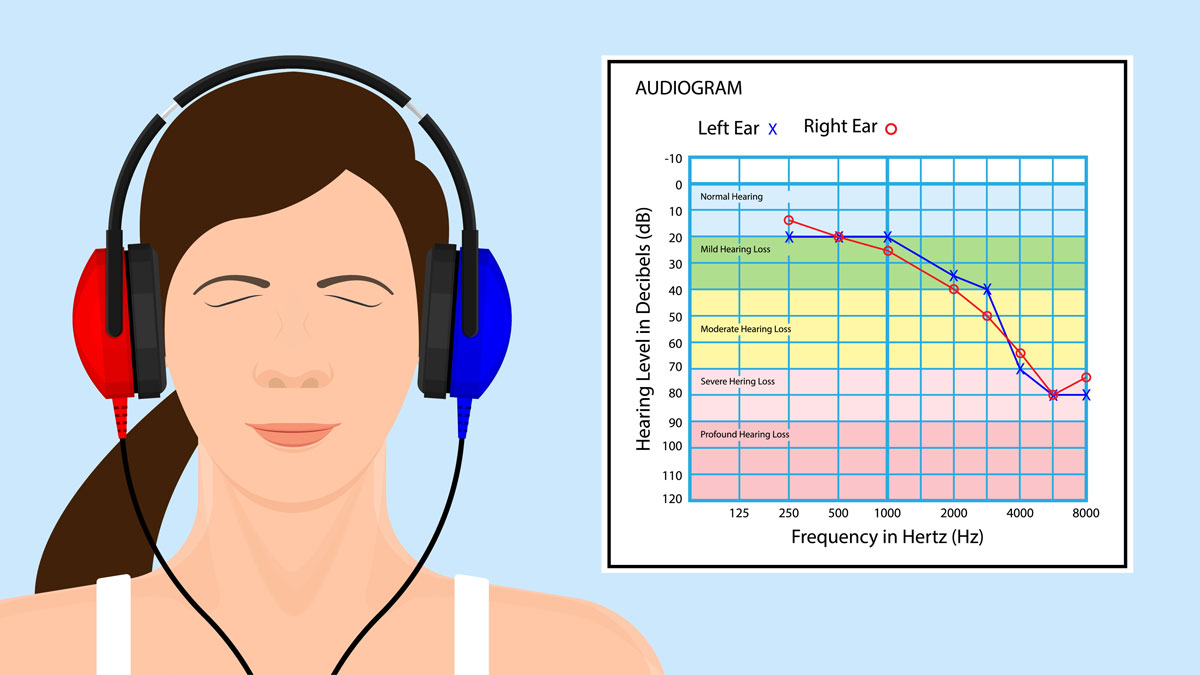You may have encountered various devices utilized for ear problems. Digital hearing aids are such a device. You place this small device in or behind your ear.
The main function of this device is to amplify the sounds so that the person with hearing loss can understand this hearing and what the speaker is trying to convey.
There are many different types available of hearing aids. Talk to the Doctor about which one is most appropriate for you. Integrate it with your lifestyle with the right solution. In this blog, we will know What is a Hearing Aid.
What is a hearing aid and how a hearing aid works?
A tiny electronic device called a hearing aid, worn in or behind the ear, enhances the sound for those who have trouble hearing. It works by capturing sound through a microphone, processing and amplifying it, and then delivering it to the ear through a speaker or receiver.
Three components work together to increase sound in hearing aids:
- After the sound is received, the microphone transforms it into a digital signal.
- The amplifier increases the digital signal’s intensity.
- The sound is amplified and sent into the ear by the speaker.
The microphone receives the sound via sound waves. It then transforms these sound waves into electrical impulses before sending them to the amplifier. Lastly, a tiny speaker in the amplifier delivers the sounds to your ear.
Digital hearing aids can be customized depending on a person’s hearing ability. The auditory energy test results in programmed temperatures and patterns for monitoring.
Batteries for hearing aids
Batteries are used to power hearing aids. Some use standard, throwaway hearing aid batteries. Yet, the majority of modern hearing aids come with an integrated rechargeable battery. To put it another way, charging your hearing aids is similar to charging a smartphone.
How do hearing aids help?
The primary advantage of utilizing hearing aids is their ability to assist individuals whose hearing loss is due to damage to the hair cells, which are microscopic sensory cells in the inner ear, to hear better and understand speech. Sensorineural hearing loss is the term for this kind of hearing loss. Disease, aging, injuries from loudness, or certain medications can also cause harm.
With a hearing aid, sound waves that enter the ear are amplified. Surviving hair cells detect the bigger vibrations and translate them into neural impulses that travel to the brain.
Increasing hearing loss necessitates programming hearing aids with greater amplification to compensate for the worsening ability to hear. This is because damage to a person’s hair cells increases with severity.
here’s a catch, though: hearing aids can only amplify sound so much. Severe damage to the inner ear prevents it from converting strong vibrations into cerebral signals. In this case, a hearing aid would be pointless.
For whom are hearing aids beneficial?
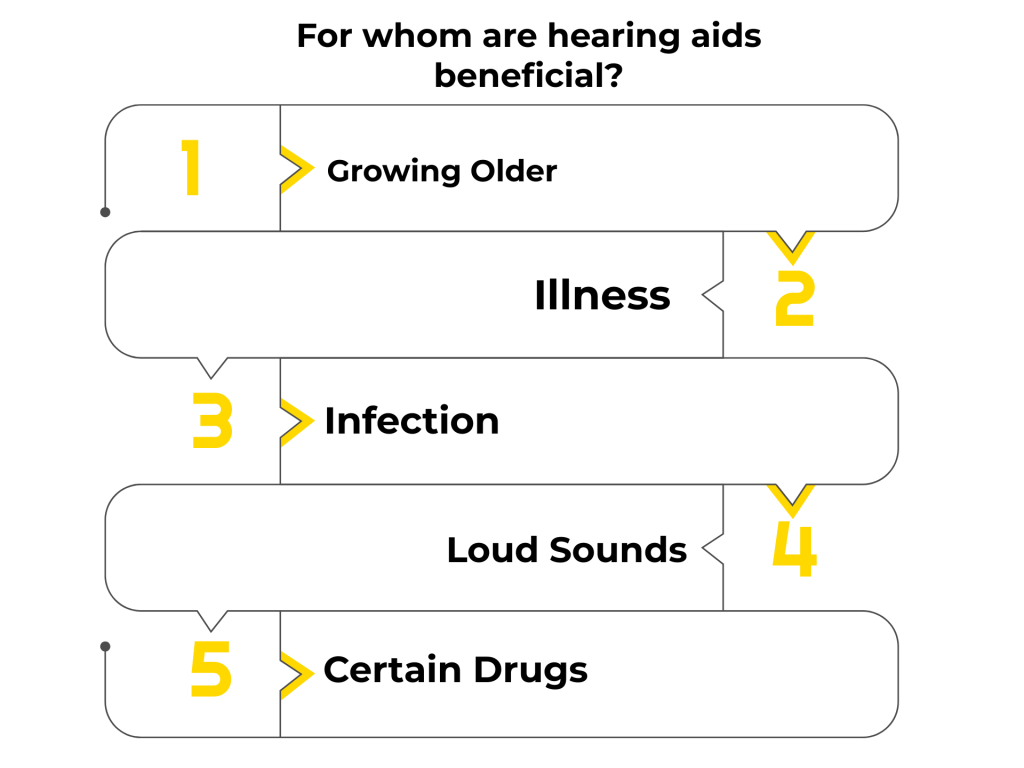
Hearing aids are best for people with hearing loss. Damage to the auditory nerve, which connects your ear to your brain, is the cause of this kind of hearing loss. Among the reasons behind sensorineural hearing loss are:
- Growing Older
- Illness
- Infection
- Loud Sounds
- Certain Drugs
to create and assess the Abbreviated Profile of Hearing Aid Benefits, or APHAB, a condensed form of the Profile of Hearing Aid Benefits.
Many listening programs
Digital hearing aids have more listening programs. The settings encompass both high and low background noise levels. Users can manually adjust multiple-programmed hearing aids, or the aids can automatically switch between programs. Additionally, certain hearing aids could include remote controls.
Technology using directional microphones
This is an additional tactic for improving hearing in noisy environments. Single-microphone hearing aids operate in an omnidirectional mode, which picks up sound from all directions. Two microphones are usually present in hearing aids with directional microphone capabilities. This sentence is already in active voice. It clearly states that one microphone actively directs itself towards the sound source, while the other microphone actively aims to reduce background noise.
Which types of hearing aids are there?
A tiny plastic case sits behind the ear, housing the majority of components of behind-the-ear (BTE) aids. A segment of clear tubing connects the case to an earpiece or an earmold. Young children often receive implants in this form because it allows for multiple elbow replacements as they grow. BTE aids are also rather durable, easy to handle, and clean.
“Mini” BTE aids, alternatively termed receiver-in-canal (RIC) aids, constitute a subset of BTE devices designed smaller in size and positioned behind the ear. A thin tube connects the ear canal and the assist. Individuals can insert Mini BTEs using a conventional earmold or may find a smaller earpiece included.
These earpieces can improve comfort, lessen feedback, and address cosmetic problems for many users. Additionally, they might reduce the occlusion effect in the ear canal, which is the sense of a plugged-up ear that amplifies the sound of a hearing aid user’s voice inside the brain.
All of the components of an in-the-ear (ITE) hearing aid are housed inside a shell that covers the outer portion of the ear. Compared to in-the-canal and entirely in-the-canal devices, ITE aids are larger and potentially easier to handle.
Doctors recommend in-the-canal (ITC) and completely-in-the-canal (CIC) aids for people with mild to moderate hearing loss. These aids come in tiny casings that fit partially or entirely into the ear canal. These are the tiniest available hearing aids, with certain advantages in terms of appearance and functionality. Nonetheless, they could be challenging to manage and modify due to their small size.
Different Styles Heading Aid
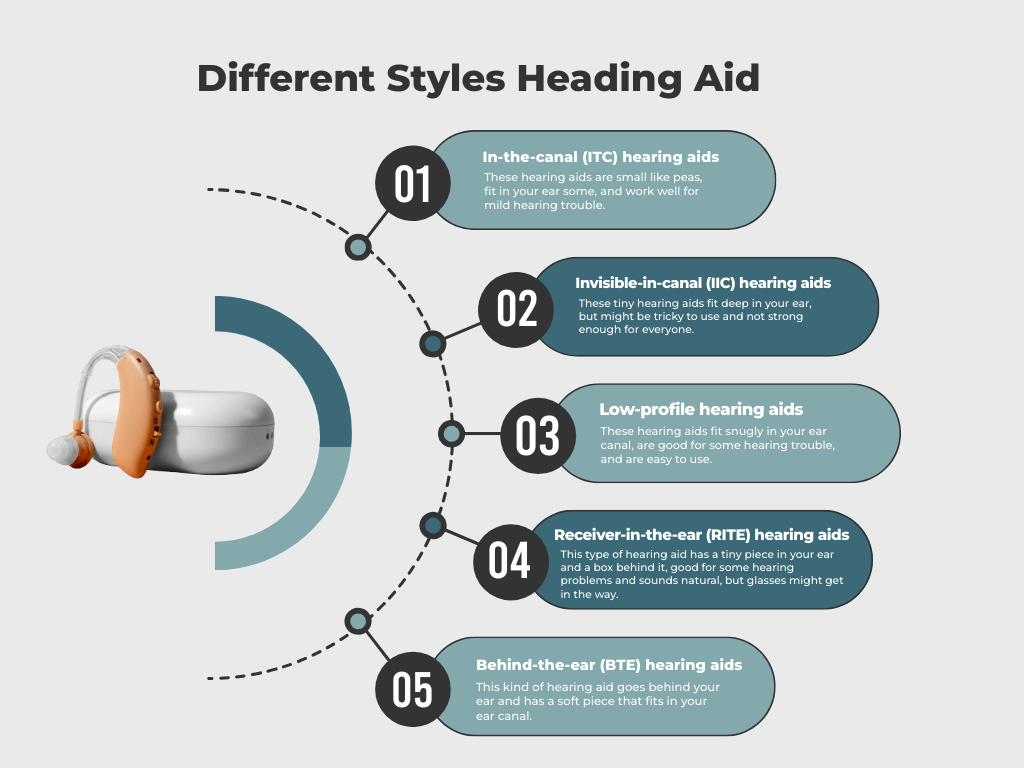
Hearing aids Tiny tech for better hearing. They come in many different styles, each with its pros and cons.
- In-the-canal (ITC) hearing aids: These are small and fit partly inside the ear canal. They are good for mild to moderate hearing loss and are not too noticeable. However, they can be hard to adjust and may not be good for people with severe hearing loss.
- Invisible-in-canal (IIC) hearing aids: These are the smallest and most invisible type of hearing aid. They fit completely inside the ear canal and are good for mild to moderate hearing loss. But they are also the hardest to adjust and may not be good for people with small ear canals or severe hearing loss.
- Low-profile hearing aids: These are a little bigger than IIC hearing aids but still fit mostly inside the ear canal. They are good for mild to moderate hearing loss and are easier to adjust than IIC aids. They can also have more features, like volume control.
- Receiver-in-the-ear (RITE) hearing aids: These have a receiver that sits inside the ear canal and a case behind the ear that is connected by a thin wire. They are good for mild to moderate hearing loss and offer clear and natural sound. However, they can sometimes interfere with glasses.
- Behind-the-ear (BTE) hearing aids: These have a case that sits behind the ear and a mold that fits inside the ear canal. They are good for all types of hearing loss, from mild to severe. They are easy to adjust and less likely to get damaged by earwax or moisture. But they are also the most noticeable type of hearing aid.
Making Sounds Clearer: Analog vs. Digital Hearing Aids
As little assistive devices for your ears, hearing aids. They make sounds louder and easier to hear, especially if you have hearing loss. Two main types of hearing aids work in different ways: analog and digital.
Analog Helpers:
- Imagine a walkie-talkie. Analog aids pick up sound waves and turn them into electrical signals, like a walkie-talkie.
- These signals are then made stronger, like turning up the volume on a radio.
- Analog aids can be adjusted to fit your needs, but they don’t have as many fancy features as digital ones.
- They are often a good choice if you have mild hearing loss and are looking for a simpler option.
Digital Dynamos:
- Think of a computer! Digital aids turn sound waves into codes, similar to how computers store information.
- These codes can be fine-tuned to make certain sounds clearer, like turning up the voices in a noisy room.
- Digital aids offer more flexibility and can be programmed for different listening environments, like a quiet room or a loud restaurant.
- They can even focus on sounds coming from a specific direction, like the person you’re talking to in a crowd.
Choosing the Right Helper:
The best type of hearing aid for you depends on your specific needs and hearing loss. An audiologist, a hearing specialist, can help you decide which type is right for you.
Which kind of hearing aid will suit me the most?

Hearing aids can help you hear better if you have trouble hearing. They come in different shapes and sizes, and some are more expensive than others. Here are some things to think about when choosing a hearing aid:
- How bad is your hearing loss? Different hearing aids work for different kinds of hearing loss.
- Do you need two hearing aids? If you have trouble hearing in both ears, two hearing aids might be better. This helps your brain understand sounds better and know where they are coming from.
- What features do you want? Some hearing aids have features like volume control, different settings for noisy places, and the ability to connect to your phone.
- How easy is it to use? You’ll want a hearing aid that is comfortable and easy to put in and take out.
- How much does it cost? Hearing aids can range in price. Don’t just pick the cheapest one – choose the one that works best for you.
- How long will the batteries last? Think about how often you want to change the batteries.
Consult your physician about having a hearing test done. They can help you find a hearing aid that is right for you.
Get used to your new hearing aids
Hearing aids can help you hear better, but it takes some time to get used to wearing them. Here are some tips:
- Wear your hearing aids every day. The more you wear them, the easier it will be to get used to them.
- Learn about your hearing aids. Ask your doctor how to put them in and take them out, change the batteries, and clean them.
- It might feel weird at first. Your voice might sound strange, or you might hear new background noises. Consult your physician about having a hearing test done.
- See your doctor if you have problems. If your hearing aids are uncomfortable, whistling, or not working right, let your doctor know.
How should I take care of my hearing aids?
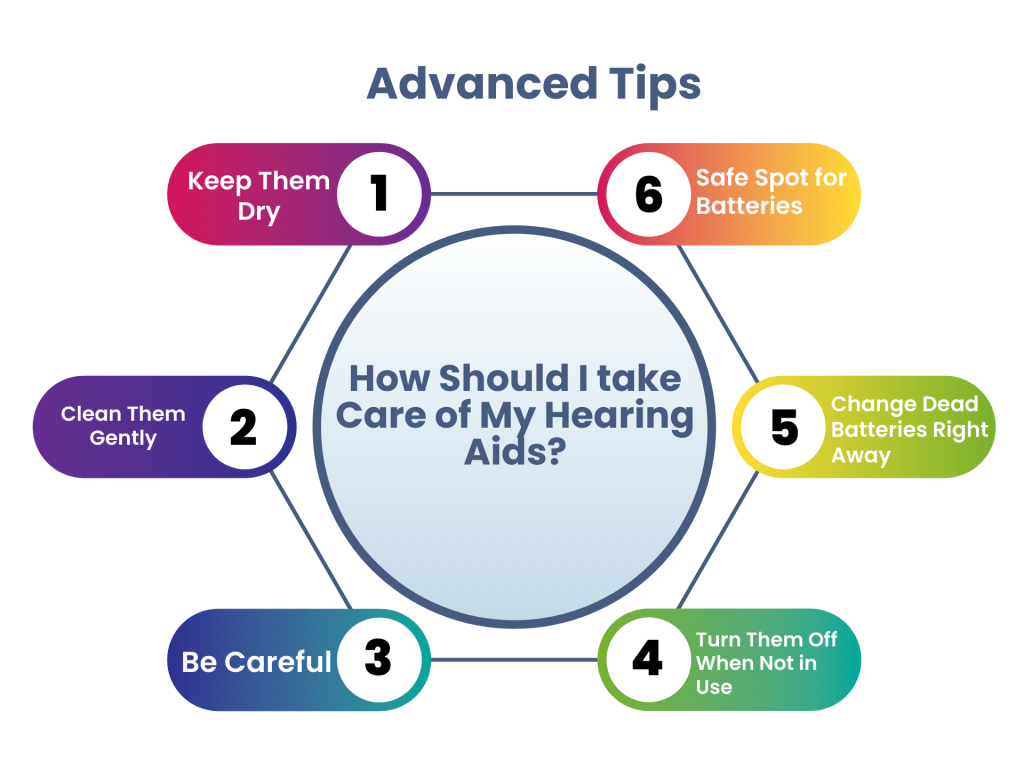
Here are some easy tips to keep your hearing aids working great:
- Keep them dry: Take them out before showering or swimming. Don’t wear them around hairspray or other sprays.
- Clean them gently: Use a soft, dry cloth to wipe them clean. Ask your doctor how to clean the wax guard.
- Be careful: Don’t drop them! They are small and can break easily.
- Turn them off when not in use: This saves battery life.
- Change dead batteries right away: A weak battery can make sounds seem muffled.
- Keep batteries and hearing aids out of reach of children and pets: They might swallow them!
